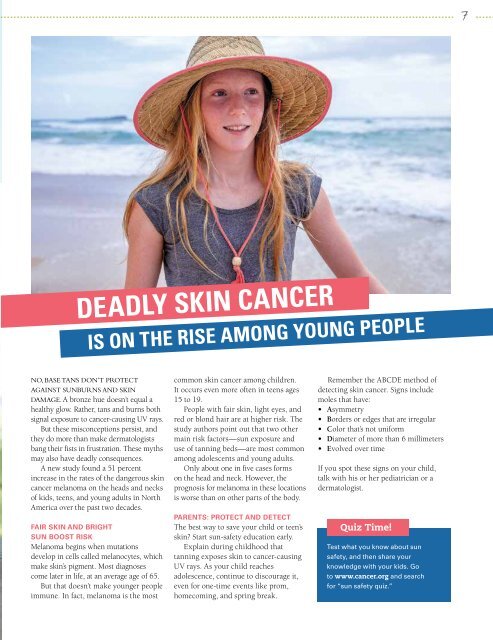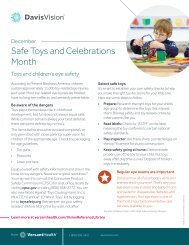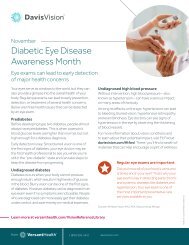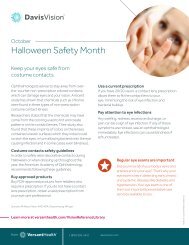June 2020
You also want an ePaper? Increase the reach of your titles
YUMPU automatically turns print PDFs into web optimized ePapers that Google loves.
7<br />
DEADLY SKIN CANCER<br />
IS ON THE RISE AMONG YOUNG PEOPLE<br />
NO, BASE TANS DON’T PROTECT<br />
AGAINST SUNBURNS AND SKIN<br />
DAMAGE. A bronze hue doesn’t equal a<br />
healthy glow. Rather, tans and burns both<br />
signal exposure to cancer-causing UV rays.<br />
But these misconceptions persist, and<br />
they do more than make dermatologists<br />
bang their fists in frustration. These myths<br />
may also have deadly consequences.<br />
A new study found a 51 percent<br />
increase in the rates of the dangerous skin<br />
cancer melanoma on the heads and necks<br />
of kids, teens, and young adults in North<br />
America over the past two decades.<br />
FAIR SKIN AND BRIGHT<br />
SUN BOOST RISK<br />
Melanoma begins when mutations<br />
develop in cells called melanocytes, which<br />
make skin’s pigment. Most diagnoses<br />
come later in life, at an average age of 65.<br />
But that doesn’t make younger people<br />
immune. In fact, melanoma is the most<br />
common skin cancer among children.<br />
It occurs even more often in teens ages<br />
15 to 19.<br />
People with fair skin, light eyes, and<br />
red or blond hair are at higher risk. The<br />
study authors point out that two other<br />
main risk factors—sun exposure and<br />
use of tanning beds—are most common<br />
among adolescents and young adults.<br />
Only about one in five cases forms<br />
on the head and neck. However, the<br />
prognosis for melanoma in these locations<br />
is worse than on other parts of the body.<br />
PARENTS: PROTECT AND DETECT<br />
The best way to save your child or teen’s<br />
skin? Start sun-safety education early.<br />
Explain during childhood that<br />
tanning exposes skin to cancer-causing<br />
UV rays. As your child reaches<br />
adolescence, continue to discourage it,<br />
even for one-time events like prom,<br />
homecoming, and spring break.<br />
Remember the ABCDE method of<br />
detecting skin cancer. Signs include<br />
moles that have:<br />
• Asymmetry<br />
• Borders or edges that are irregular<br />
• Color that’s not uniform<br />
• Diameter of more than 6 millimeters<br />
• Evolved over time<br />
If you spot these signs on your child,<br />
talk with his or her pediatrician or a<br />
dermatologist.<br />
Quiz Time!<br />
Test what you know about sun<br />
safety, and then share your<br />
knowledge with your kids. Go<br />
to www.cancer.org and search<br />
for “sun safety quiz.”
















